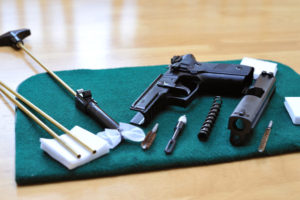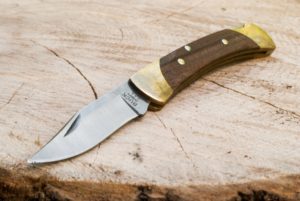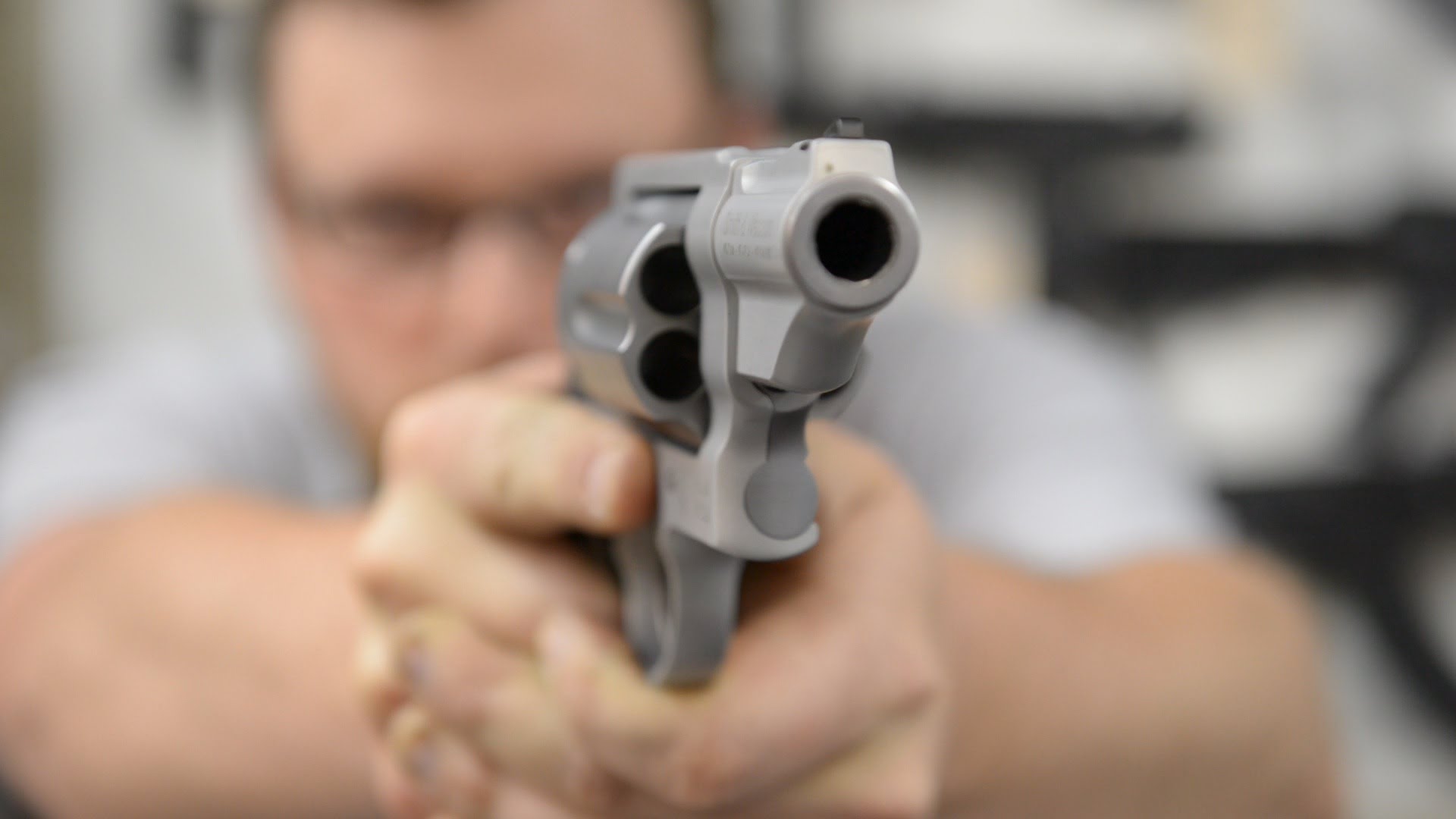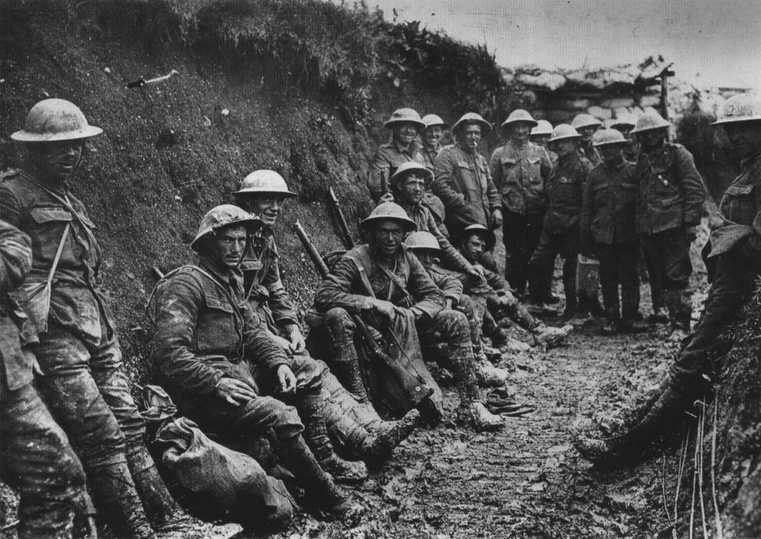Editor’s Note: We offer another great article from our buddy, Lupine Nobilus. This man knows what he is talking about.
In those days was Hezekiah sick unto death. And the prophet Isaiah the son of Amoz came to him, and said unto him, Thus saith the LORD, Set thine house in order; for thou shalt die, and not live. 2 Kings 20:1
Of all the Bible verses, this scripture is as simple as it is profound. Hezekiah received a simple message: You are going to die; get your house in order and be prepared for your death.
Be prepared.
With this preface, I wish to offer this thought.
One of the most sacred charges of a man is that of protecting his family.
Allow me to say that again.
One of the most sacred charges of a man is that of protecting his family.
You are the head of your household. It is your sacred duty to protect your family, be it an adult son with his mother, brother with his sister or younger siblings, or father with the rest of the family. It is your lot to be the base line in protecting those who are most precious to you.
There are many ways this can be done.
 There is spiritual protection. Being firmly grounded in the faith of Christ Jesus is a solid anchor for this. Also, being well read and versed in the Bible. Keeping your faith strong and your relationship to Christ even stronger.
There is spiritual protection. Being firmly grounded in the faith of Christ Jesus is a solid anchor for this. Also, being well read and versed in the Bible. Keeping your faith strong and your relationship to Christ even stronger.
There is emotional protection. Being grounded in a calm peace when life rages around you. Knowing when and how to respond when everyone else has already lost their collective cool is one of the most important non-faith related attributes.
There is physical protection, the most basic and more complicated facets of this charge, and it is this facet that I’m going to elaborate on.
Just as Hezekiah was told, I now tell you. Get your house in order. Have your house in order and stay prepared. We have been in a war for souls since Christ walked the earth. However, the day draws nigh that it will fall on us to protect ourselves and our own from the very physical demons that walk this earth.
I understand carrying a firearm isn’t for everyone. If you are not comfortable with this idea, or even more so, if you are not properly trained and comfortable with the idea, carrying a firearm would become more of a liability than an asset. But you have other options.
So let’s go through a list of sorts, a check list of readiness for your day to day life.
First off, I will address those that do carry (and if you do carry, you’d better daily carry everywhere you are so legally allowed, otherwise you will happen upon Murphy, and that will be a bad day, even in the best of outcomes).
I want to ask you some questions, because I want you to think in detail about this situation. The weight of a sacred charge is for you to carry. The responsibility is yours and no one else’s.
First let’s check over the firearm.
When was the last time you shot it? (Have you shot and trained with it enough that you are proficient in using it, in non-standard square range situations? Can you reliably hit with it? Can you safely manipulate all the controls and perform remedial actions if needed?)
Where did the bullets strike and were they to the point of your aim? (This seems simple, but a lot of people, due to eye issues or alignment on the gun, do not have a point of aim, point of impact zero on their pistols. In my previous piece, I listed why adjustable sights on a pistol are a must, and this is why. A simple adjustment to a rear or front sight can go a long way in making that pistol hit where you aim, unless you can’t adjust them)
 Did you field strip and clean it properly after your last range/training session? (All pistols should be field stripped and cleaned right after they’ve been purchased. The protective oil that firearms ship with is not a good cleaning agent or oil. It’s simply there to keep the firearm from rusting. After the initial cleaning, at the very least, you need to clean your firearm after every range and training session. A slow methodical examination of the parts after you’ve disassembled it could prevent grief in the future. Plus it builds comfort and trust within the gun itself, knowing how it works and how well its holding up. A few drops of oil to the springs and moving parts goes a long way to slicking a firearm up for easier, more reliable function.
Did you field strip and clean it properly after your last range/training session? (All pistols should be field stripped and cleaned right after they’ve been purchased. The protective oil that firearms ship with is not a good cleaning agent or oil. It’s simply there to keep the firearm from rusting. After the initial cleaning, at the very least, you need to clean your firearm after every range and training session. A slow methodical examination of the parts after you’ve disassembled it could prevent grief in the future. Plus it builds comfort and trust within the gun itself, knowing how it works and how well its holding up. A few drops of oil to the springs and moving parts goes a long way to slicking a firearm up for easier, more reliable function.
Does it have dust bunnies collecting under the hammer and inside the trigger guard? (Seriously, does it? Especially with pocket carry, as pocket litter collects in pockets. Never mind how nasty “pocket dust” is. You don’t want that in the moving parts of your pistol.)
What is the condition of your magazines? (You do have an extra magazine that you carry with you every day as well, right?) When was the last time you looked them over to ensure that the feed lips aren’t chewed up? Are they properly oiled (where required/recommended)? Do they have rust on them anywhere? Rust on the outside of the magazine can be annoying. Rust on the inside of a mag can be dangerous. Most magazines are easy enough to disassemble, and if nothing else, a gun rag and a dow rod or screw driver can get them clean. Especially if you’ve trained out in the mud and the rain).
What is the condition of the ammo? This is one that actually bit a good friend of mine a while back. The Glock and other striker-fired pistols have a bit of play in the firing pin because they are free floating. Using the same bullet in the chamber (which is done unintentionally at times when you unload the pistol, put the bullet back in the magazine, then load that magazine and charge the pistol) causes multiple instances of very light strikes on a primer. Anyone that has inspected the bullet pulled from a chamber has seen at some time the light indentations on the primer. It is possible, as one friend found out, that the cumulative light strikes on the same primer can cause a detonation. That is bad all the way around. So make sure you rotate your ammunition periodicially. If you see rounds with light strikes on the primers, cull them out and use them for test and practice your next range day. While most personal defense ammo is made for long term storage with sealed primers and crimps, it’s not recommended to have year old ammo in your mags. Rotate it out periodically in your range sessions. Yes, I know good personal defense ammo is more expensive, but really your life is worth $20-40 (depending on how many mags you carry) every 2-3 months?
Now that we know your firearm is properly maintained, what about your holster? Even if it is a dedicated pocket holster (which, if you pocket carry, it better have its own holster and the only other thing that goes in that pocket is your hand), or the ever popular IWB hybrid, worn in various positions, it needs to be checked. Make sure it’s not pulling apart, that the rivets or screws aren’t working out. Also check to make sure it still properly retains your firearm. It’s a bad day when you have to go use the bathroom out in public to have your pistol fall out in the floor as you sit down on the loo. What about your belt? (You do wear a dedicated gun belt with your holster right?) As a good friend of mine has wisely said, “You have to think about it like a system.” A good gun belt and a good holster are an inseparable system. You need a belt that’s strong and rigid, and can handle the weight of your firearm by itself. This isn’t a marketing ploy. There is real reasoning behind it. Just as your wallet will pull your pants up when you try to remove it from a tight pocket, a firearm can pull the pants/belt with it when you draw, if it doesn’t have something rigid to hold it in place. You want your pistol to be anchored to your desired location with as minimal movement as possible for when you draw and re-holster the firearm.
Have you considered your clothing choices with your concealed carry piece? Your body has to be able to move throughout the day, and that firearm anchored to your side moves with your body. You have to think what would work for you for clothing. They call it concealed carry for a reason. (Not even touching open carry here). I can’t say what works for me will work for you, but I can say in general that yoga pants and skinny jeans do poorly to conceal mid and large frame pistols.
What’s the condition of your first aid kit? (You DO have a first aid kit right?) I’m not saying to carry an IFAK around with you everwhere, but at least have a decent kit in your vehicle. Know where it is and have easy access to it (velcro goes a long way here) Make sure it hasn’t soaked up too many Dr. Pepper spills and that it has in it all the stuff you think it does. There’s nothing more annoying than saying, “yeah I have X medicine or Y type of bandaid/bandage,” and finding out you’ve already used or given all of them away. Restock it, make sure things that need to be airtight are, and make sure everything else is dry and clean. For me, to carry a firearm, it’s just as important to carry a good basic first aid kit. I understand and accept bullets go both ways. While I never want to have to use either, I never want to have to need either and not have it. Even if it’s a good tourniquet and your “boo boo kit,” have something. Most importantly KNOW HOW TO USE IT.
 Carry a pocket knife. Not even on the defensive aspect (because really, working with a knife is like throwing a ticked off bobcat in a packed bathroom; everyone is going to get cut and its going to be nasty). Carry a pocket knife for the sheer utility of the tool. Make sure it’s sharp, clean, and oiled (do you really want to open a package of food with the knife you skinned that deer out with…and didn’t clean it?) Make sure it locks open securely and closes properly. Also make sure it’s in the same place in/on your pocket every time. Make sure you can get to it. Fumbling around for a blade when you have a very taught rope wrapped around someone’s leg is just bad.
Carry a pocket knife. Not even on the defensive aspect (because really, working with a knife is like throwing a ticked off bobcat in a packed bathroom; everyone is going to get cut and its going to be nasty). Carry a pocket knife for the sheer utility of the tool. Make sure it’s sharp, clean, and oiled (do you really want to open a package of food with the knife you skinned that deer out with…and didn’t clean it?) Make sure it locks open securely and closes properly. Also make sure it’s in the same place in/on your pocket every time. Make sure you can get to it. Fumbling around for a blade when you have a very taught rope wrapped around someone’s leg is just bad.
Let me close with this thought.
God chose Gideon to lead a force against the Midianites. A large force was created, but God wanted to make a point. First, he weeded out those that couldn’t control their fear. Then he weeded out the brave amongst the other good soldiers. The way he weeded them out was to watch how they drank water. Those that didn’t care, and got down on hands and knees, putting their face to the water were separated from those that knelt and brought handfuls of water up to their mouths.
Here’s why. If you get down on all fours, you give up the majority of your situational awareness, and ability to respond if something happens. Your face is in the water and you’re already on the ground. You have very limited responses from that. However, those that were brave and smart understood there was a better way. They were aware of their surroundings, and conscious of their actions. They put themselves in a better place to respond accordingly should something happen. Awareness is a conscious and active choice within your life.
The most important thing you need to carry with you everywhere you go is acknowledgement that bad things can happen, and the active willingness to be aware of your surroundings and the people around you. We have to be able to respond properly to the situation that’s presented to us. That proper response is directly dictated by our awareness of the situation. Keep your head up, eyes open, mind on God, and heart to your family. This is your charge.










5
4.5